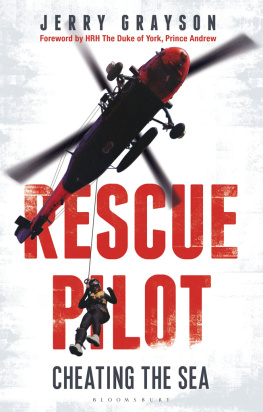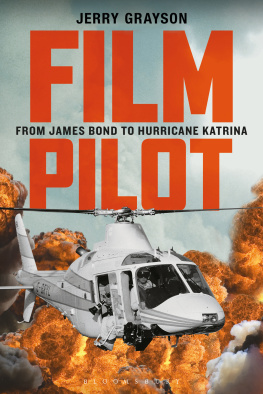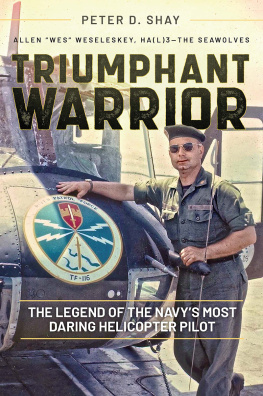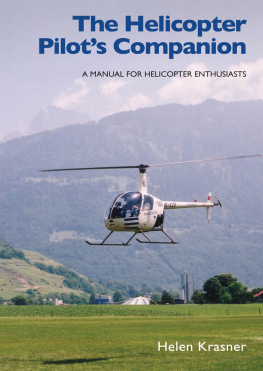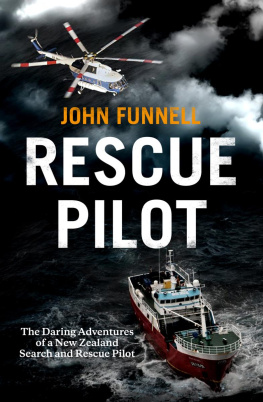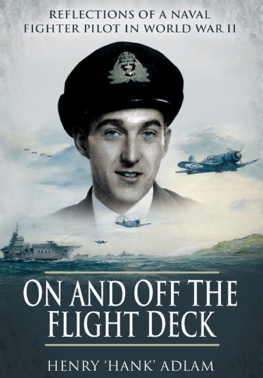Dedicated to the memory of John Carpenter, a superb helicopter engineer who taught us all the true meaning of bravery.

| BUCKINGHAM PALACE |
This book by Jerry Grayson, who became the youngest Search and Rescue pilot at the age of just 17 and went on to have a remarkable aviation career within both the Royal Navy and also in the film industry, acts as a reminder of the bravery and selflessness of the crews who put their lives at risk to save others.
Leadership, teamwork and training are the key to success in many fields of endeavour and Search and Rescue flying is just such an endeavour that requires these skills and I know from my own service the importance of all three in creating an effective helicopter crew.
Reading this book I am also reminded of the undeniably strong camaraderie of aviators as well as the wonderful sense of humour that arises in the face of adversity. In recording and celebrating this invaluable work of Search and Rescue, I am certain that this book will be an inspiration for the next generation of pilots.

I WAS BORN IN A FOREST near the ancient southern English castle town of Arundel. My mother hadnt known she was pregnant until the day my father delivered me on the table of their modest home, our caravan Toad Hall. School was no fun at all; there were so many more interesting things happening just beyond the gates of what I perceived to be a prison. My mum cried when JFK was shot. My dad drove in the Monte Carlo rally. The Rolling Stones were arrested in the next village for some misdemeanour; I didnt understand what the story was about, and I certainly didnt appreciate that we were living through a period of sex, drugs and rock and roll that would change the world forever. All I knew was that everybody else was having a lot of fun while I struggled at school with trigonometry and hormones.
By the time I was twelve I knew I wanted to fly. By the time I was fifteen my maths teacher had regretted admitting that he had a passing interest in aviation: Graysons application to the syllabus can be variable; his discourses on three-dimensional air-traffic systems are a bit much for me at eight oclock in the morning. I must have been the worst kind of nerd as I sat for many freezing hours at the end of Gatwick runway glued to the speaker of a little transistor radio, listening to the airliners being seamlessly sequenced to the ground.
By sixteen I had applied to the Royal Navy to fly helicopters. Walking through the doors of Dartmouth Naval College in 1972 might have been a culture shock for the other fifteen officer cadets, most of whom had already lived a bit of life. For me it was just a natural continuation of the schooling process, except that it was designed to end in a cockpit and was therefore worth taking seriously. By seventeen I was able to quote the old self-deprecating military joke: Just last month I couldnt spell pilot and now I are one.
For eight happy years, until 1980, I wore a naval uniform as part of the Fleet Air Arm. I learned how to use a helicopter to chase submarines, and then how to use one to save lives. I entered Civvy Street still with a helicopter on my back. These are my stories. They dont always stick to a strict timeline, because memory doesnt work like that. Ive never been one to sweat the dull stuff first; there are too many exciting moments in life that have to be chased down right away. If aviation has taught me nothing else it has taught me that sometimes those highlight events chase you down, and often at times when youre least expecting them.
GOING TO WORK WAS BOTH A THRILL and an ordeal. It was only about a seven-minute ride from home but there was always a feeling of adventure. I would scan the skies as I drove along for an idea of what the day might bring. By the time Id reached the airbase perimeter track I could make a pretty good guess at the type of work ahead of us. The ordeal came from having to crawl out of my pit in darkness. We had to be in, dressed and ready to go by dawn, which was no small feat in the middle of summer.
Ten days before Christmas 1979 it was very obvious what type of work would come our way. The drive in took much longer than usual as I skirted fallen trees, bits of shed and various other obstacles, some of which were still airborne. Anybody at sea was going to have a very hard time today.
I should explain that work for me consisted of flying a large helicopter with Royal Navy in big letters down the side. It was painted in dark blue with a wide orange dayglo stripe around the tail and an Ace of Clubs high up the side of the main airframe. This colour scheme and logo denoted the helicopter as being one of thirteen similar aircraft, all part of 771 Squadron, responsible for Search and Rescue (SAR) duties around the coast of Cornwall. Our base was the Royal Naval Air Station Culdrose, the biggest helicopter base in Europe, just outside the small town of Helston, deep in the heart of the West Country.
When wearing formal uniform, which I rarely did, the two gold rings around my sleeve denoted the rank of Lieutenant, Royal Navy, and the proudly worn wings placed me as a pilot. Today I was in jeans and sweatshirt, easy garb to throw on in the dark. I would be changing into flying clothing as soon as I reached the squadron office block.
Culdrose was in an appalling state. The airfield was dominated by about a dozen huge oblong hangars. Each hangar could hold about ten big military helicopters and they still looked quite new and shiny or they had the day before. Overnight the winds had risen to storm force, torn little openings in the roof of each hangar, then systematically set about ripping them to pieces. The walls were still intact but many of the roofs were being peeled back, sheet by sheet. I couldnt believe the size of the corrugated rolls of metal sheeting steadily marching across the grass, down the runway and off into the woods nearby. Each one must have weighed more than a ton.
Our own two hangars had fared better than the rest of them. Our squadron nestled a little way down a valley and was slightly protected by the other squadron hangars further up the slope, but this did mean that we were being bombarded by bits from all the other hangars as they broke up. I chose to break all regulations and park my car in the hangar.
Putting the duty SAR out on the apron was out of the question. It would have been destroyed in minutes. So we prepared it under the big eerie sodium lights inside while the metal-upon-metal sound of the storm raging outside was amplified in the cavernous building.
We didnt have long to wait before the call came in. A Greek cargo vessel, the Skopelos Sky, had radioed for immediate assistance: In position three miles North of Trevose Head. Listing badly. 15 crew members on board.
Dick Harvey, our coastguard officer, continued listening to the radio as we tried to work out how we were going to get airborne. The Padstow lifeboat was in the process of launching but I didnt fancy their chances of achieving anything in these winds. The waves were likely to be enormous up on the north Cornish coast, a place where, in previous centuries, regular shipwrecks had provided unexpected bounty for the local communities. I had no idea what was on this particular ship and didnt much care. There were fifteen lives at stake and, assuming we could pick them up, we could only carry about seven at a time.

